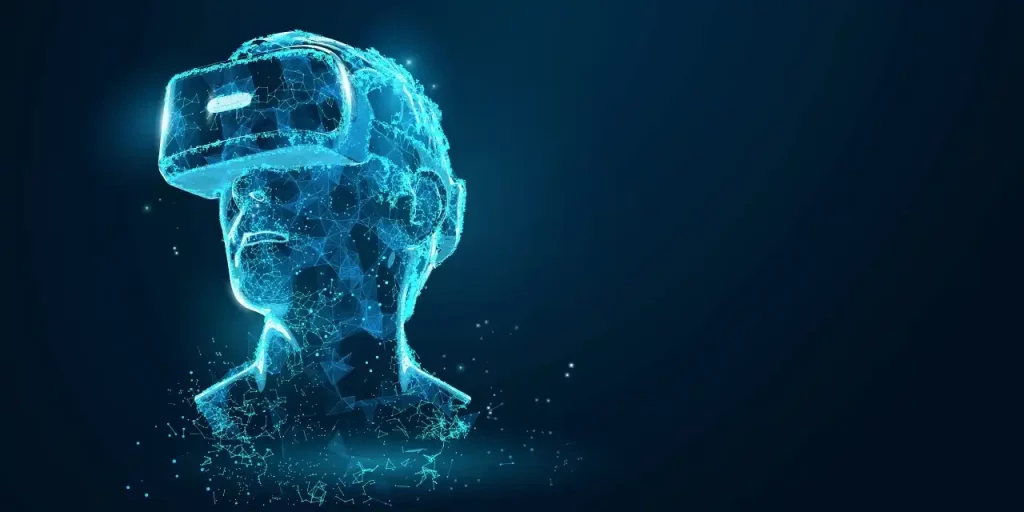Virtual reality technology seeks to provide an immersive, life-like experience. It uses headsets that display a digital world and stereoscopic lenses to make it look 3D. Then, motion trackers on the headsets can see where you’re moving and mimic your movements in the virtual experience.
Follow David Attenborough to meet ancient ocean creatures or take a tour of the Anne Frank house in Amsterdam. Some experiences even go as far as allowing you to step into Renaissance paintings.
-
Everest VR
Mount Everest is one of those places that has to be experienced in person, but if you can’t make it there (or don’t have the strength and resources), vr experience can help. Solfar Studios’ first-person Everest VR experience launched on the HTC Vive and Oculus Rift in August, offering a simulated climb up one of the world’s highest mountains.
This immersive experience uses advanced photogrammetry and 3D modeling techniques to bring the mountain range into stunning detail. The team analyzed over 300,000 high quality pictures to create a realistic 3D mesh of the mountain range and simulate certain parts of the climb up its 29,029-foot summit.
Throughout five stages you prepare for the expedition at base camp, cross over the Khumbu Icefalls, sleep overnight in camps 4 and 5, ascend the Hillary Step, and finally reach the top of the mountain to place down your own flag. Despite a couple of moments that offer light interactivity, this is not a game but an exploration experience that makes the most of its incredible vantage points.
-
Ecosphere
Ecosphere takes you on a virtual journey to some of the world’s most remote wildernesses. From the jungles of Borneo to Raja Ampat, this free app uses cutting-edge VR technology to create stunningly life-like landscapes. It also features wildlife such as lions, elephants and manta rays.
Several immersive experiences aim to preserve historically significant destinations with incredible detail. For example, the Anne Frank House VR allows viewers to step inside the secret annex of her family’s home in Amsterdam during WWII. Similarly, the Museum of Fine Arts VR allows viewers to explore paintings from Russia’s Hermitage Museum down to individual brushstrokes.
A few truly gripping documentaries are now available through VR, like Traveling While Black, a 20-minute look at the history of how black Americans have been restricted from traveling in their own country. Another fascinating documentary is Space Explorers, a gorgeous look at life aboard the International Space Station. It’s almost as close to being in space as you can get without actually going there.
-
Patagonia VR
Patagonia VR is a vr experience that allows users to explore a stunning region. It is the perfect way to see this beautiful area that is often inaccessible. It features lakes, mountains, and both glaciers. It is also home to some of the most spectacular wilderness on earth.
This experience is designed by Specterras Productions and utilizes a balance of computational photography, gaming theory, and VR. Its film style and visuals allow it to feel like a real adventure. The experience is incredibly realistic and features photogrammetric modeling that combines real-world photos to create the VR world.
This Virtual Reality experience is available through BRINK XR, which is a company that donates 1% of their profits to drive positive change for the planet. The company has also made their experiences accessible to all, so everyone can experience them no matter what device they have. In addition, they offer an array of other adventures that make use of VR. From driving tanks into war zones to flying around a canyon on a Pegasus, these games will have you feeling like you’re somewhere else.
-
The Great Barrier Reef
The Great Barrier Reef is one of the world’s natural wonders – a living coral ecosystem that’s visible from space. It features 3000 individual reefs, 900 islands and hundreds of sun-soaked tropical beaches. It’s home to over 1500 species of fish, including the iconic clownfish which inspired Disney/Pixar’s popular character Nemo!
The UNESCO World Heritage-listed marine park is an important source of income for the region. It contributes approximately thirteen, four and two billion Australian dollars annually to the economy in terms of tourism, mining and agriculture respectively.
Despite facing significant challenges, the Great Barrier Reef continues to thrive thanks to its thriving marine park community and the many dedicated people working to protect it. Education programs, plastic pollution control, crown-of-thorns starfish (COTS) eradication, coral nurseries and renewable energy development are just some of the many initiatives that help preserve this iconic natural attraction.
Everyone can do their part to preserve the Great Barrier Reef. Book a tour with an eco-certified company or accommodation, choose low-carbon modes of transportation and carbon offset your trip to balance the effect of greenhouse gas emissions on ocean warming, and support reforestation programs to future-proof the Reef against climate change.
-
Antarctica VR
Antarctica VR is a 360-degree immersive experience that allows you to explore a day in the life of scientists researching this mysterious continent. It has been touring Australia with sell-out seasons at the National Museum of Australia and Western Australian Maritime Museum, and has also been showcased at several festivals.
The application uses GPS and compass sensors on the user’s mobile device to track their location in real space. This information is then used to update the virtual tour space, which is represented by a map view and 3D models that represent each destination. These destinations are connected via a red route path, and displayed as flags (red, blue or grey).
The experience is narrated by Anthony Powell, a filmmaker who spent over a year living in Antarctica. It features footage from his documentary ‘Year on Ice’, which was produced with the support of the Australian Antarctic Division, the Western Australian Museum and Lotterywest, as well as DNEG.
